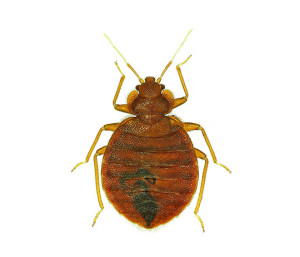
Overview
Bed bugs are small wingless insects that feed solely upon the blood of warm-blooded animals. Bed bugs and their relatives have evolved as nest parasites. Certain kinds inhabit bird nests and bat roosts and await the return of their hosts; others have adapted well to living in the ‘nests’ (homes) of people. Hatchling bed bugs are about the size of a poppy seed, and adults are about 1/4 of a centimeter in length.
Bed bugs are most abundant in rooms where people sleep, and they generally hide nearest the bed or other furniture used for sleeping. Bed bugs are most active in the middle of the night. Favoured hiding sites include the bed frame, mattress and box spring. Clutter around the room offers additional sites for these bugs to hide, and increases the difficulty in eliminating bed bugs once they have become established.
Bed bugs are often stowaways in luggage, furniture, clothing, pillows, boxes, and other objects when these are moved between apartments, homes and hotels. Used furniture, particularly bed frames and mattresses, are at greatest risk of harboring bed bugs and their eggs. Thus, one should carefully scrutinize and consider the history of any used furniture. Bed bugs can wander between adjoining apartments through voids in walls and holes though which wires and pipes pass.
Business consequences:
In the hospitality industry bed bugs are bad news and can result in:
- Client disgust
- Alarm
- Loss of trust and;
- Reputational damage
What should you do if you find bed bugs?
Do not apply pesticides yourself unless you fully understand what you are applying and the risks involved. You are legally liable if you misapply a pesticide, or apply it without a license to the property of another (including common spaces in apartment buildings). Generally, landlords, owners and building managers cannot legally apply pesticides.They should, instead, hire a licensed pest control operator to confirm the infestation and to develop an integrated pest management plan.
Treatment:
- Once their identity is confirmed, a careful plan should be devised to eliminate the bed bugs in a manner that promotes success while limiting unnecessary costs and exposure to insecticides
- Do not discard furniture and do not treat until you have a plan
- Professional bed bug mattress treatment
- Fumigation

